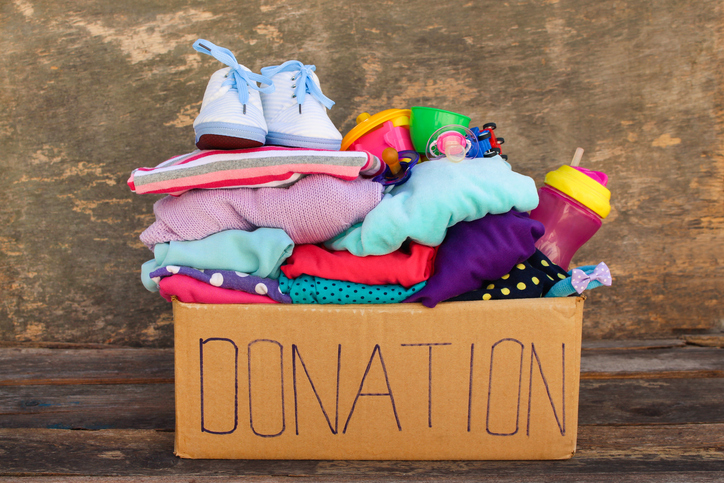In today’s interconnected world, climate change is a serious concern for communities big and small. With global temperatures rising each year, lengthening droughts and melting glaciers, there’s no doubt that now is the time to take action against global warming.
Although it may seem like an overwhelming task, any and all efforts to slow global warming can make a difference. In fact, there are several small-scale actions that individuals can take to reduce their carbon footprint and lower their overall contributions to global warming. If you’re looking for ways to reduce your carbon footprint at home, check out our top 10 environmentally friendly strategies below.

1.Travel Smarter
One of the most prominent sources of carbon dioxide — a greenhouse gas that traps heat in the Earth’s atmosphere — is transportation. Non-electric cars, for example, produce considerable amounts of carbon dioxide. Of course, going without a car would be much more beneficial for the planet, but this just isn’t realistic for most individuals and their families.
Instead, take steps to make sure that your vehicle is running as efficiently as possible. Check your tire pressure and service your car regularly. Use cruise control on long drives to maximize fuel efficiency, and don’t load your car down with heavy items unnecessarily. Lastly, avoid overusing air conditioning and carpool or use public transportation whenever possible.
2. Eat Less Meat
Because the production of red meat requires large amounts of water, land and feed, experts say that reducing one’s beef intake can significantly decrease their carbon footprint. However, this doesn’t mean that you have to be vegan to be environmentally friendly. By choosing chicken or a plant-based option over red meat, you can automatically reduce the amount of greenhouse gas produced by your meal. What is more, eating locally grown or raised food is even better for the environment. Replacing just one meal a week with a plant-based option makes a difference.
3. Don’t Buy Excess Food
Reducing your household’s food waste is one of the most impactful ways to reduce your carbon footprint at home. Today, food takes up more space in American landfills than anything else. An easy way to avoid this serious problem in your own household is to adopt more efficient food practices. Make it a habit to regularly clean out or organize your refrigerator. This allows you to easily keep track of the food you already have and plan to consume it before it expires. You can also reduce food waste by getting creative with leftovers instead of throwing them away. Freeze excess portions of food to enjoy at a later date.
4. Keep Cool While Conserving Energy
Is your home helping you reduce your carbon footprint? By making a few simple adjustments, you can improve your home’s energy efficiency for the years to come. Start by making sure that your home is sealed correctly. Check your windows, attics and doors to ensure that your heat or air conditioning stays inside. Your home should also be adequately insulated to keep temperatures stable. Finally, consider a “cool roof” that reflects light away from your home to keep you cool during the summer months.
5. Use LED Light Bulbs
Choosing LED light bulbs over classic incandescent light bulbs is one of the easiest ways to reduce your carbon footprint at home. It only takes a few seconds to change a light bulb, but the action could save you significant money and energy consumption for years to come. In fact, LED light bulbs use up to 85% less energy than regular light bulbs and last up to 25% longer. So, there’s no reason not to swap incandescent light bulbs for their LED counterparts. In addition, opt for products with the Energy Star label — this means that they’ve been approved for U.S. energy standards.
6. Upgrade Energy-Inefficient Appliances
Though you may think that you’re doing yourself a favor by using old appliances, this isn’t necessarily the case. For example, old refrigerators are known to be significant energy-wasters. If your refrigerator is 15-20 years old or more, it’s time to replace it — both your wallet and the planet will thank you. In the same way, desktop computers should be replaced with more recent laptops. They charge and operate on far less energy than desktop computers.
7. Recycle the Right Way
Making sure that you recycle the right way is crucial. It’s essential that you don’t recycle items that contain traces of food — failing to rinse food containers can ruin a whole batch of recycling. It’s equally as important to ensure that you aren’t putting non-recyclables in the recycling bin. Avoid broken glass, broken light bulbs, garden hoses, sewing needles, and aerosol cans that aren’t empty, to name a few items. Check for a number on the bottom of your recyclables and verify if your city accepts them online.
8. Opt For Reusable Bags and Containers
Swapping plastic bags for reusable bags is a simple way to reduce your household’s carbon footprint immediately. By taking your own bags to the store, you can avoid accumulating endless plastic bags while helping the environment. In the same way, avoid using plastic packaging for meals by investing in reusable glass containers that can be washed. At home, keep dry goods in reusable canisters and choose grocery stores that allow you to put items like pasta, nuts and dried fruit in your own containers.
9. Shop Second-Hand Clothing
When it comes to staying fashionable, the good news is that there are plenty of environmentally friendly options. One such option is buying second-hand clothing at stores like Goodwill. By limiting your consumption of new clothes, you can reduce your carbon footprint and global pollution (given that fashion is one of the most polluting industries in the world). If you clean out your closet, consider donating to these types of stores or even repurposing your clothing for cleaning materials. If you do need to purchase new clothing, check for fair trade logos that indicate that the item was produced sustainably.
10. Wash Clothes in Cold Water
Last but not least, a fantastic way to limit your carbon footprint is to wash your clothes in cold water. About 90% of the energy used while washing clothes goes toward heating the water. With that in mind, using cold wash cycles can help you save significant amounts of money. It’s also a great way to make your clothes last longer. Wait until you have a full load to do laundry and hang your clothes out to dry to save even more energy!
Goodwill Helps Communities Reduce Their Carbon Footprint
With these tips in mind, it’s easier than ever to reduce your carbon footprint from the comfort of your home. Goodwill of Central and Northern Arizona is proud to support these environmentally friendly strategies and encourage everyone to reduce their carbon footprint. By accepting donations of all kinds, Goodwill is able to divert more than 100 million pounds of items from Arizona landfills each year. Do your part by donating to your local Goodwill or engaging in their no-cost career services today.
